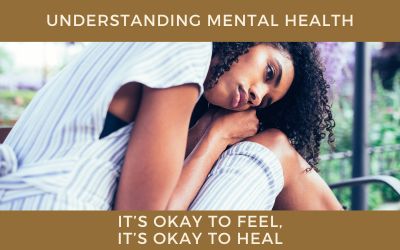In our pursuit of happiness and well-being, there’s a common misconception that having good mental health means never feeling sad or anxious. However, the truth is quite the opposite. Mental health is about recognizing when you feel sad or anxious and developing a game plan to identify and resolve your triggers. In this article, we’ll explore the importance of acknowledging our emotions, understanding triggers, and finding strategies for healing and growth.
Embracing Emotions
One of the first steps toward nurturing good mental health is accepting that emotions are a fundamental part of the human experience. We all feel a wide range of emotions, from joy and contentment to sadness and anxiety. It’s important to understand that experiencing sadness or anxiety does not equate to poor mental health. These emotions are natural reactions to the challenges and complexities of life.
Recognizing Triggers
The key to managing our emotional well-being lies in recognizing the triggers that evoke sadness, anxiety, or other negative emotions. Triggers can vary widely from person to person and may be linked to past experiences, present stressors, or future uncertainties. They can be as subtle as a particular scent or as complex as a significant life event. Identifying these triggers is a crucial step toward gaining control over our emotional responses.
Developing a Game Plan
Once we’ve identified our triggers, it’s essential to develop a game plan for managing and resolving them. This plan can include various strategies and techniques tailored to our individual needs. Here are some steps to consider:
Self-awareness
Take time to reflect on your emotions and their underlying causes. Journaling, meditation, or talking with a trusted friend or therapist can help you gain insight into your feelings.
Healthy coping mechanisms
Explore healthy ways to cope with sadness or anxiety. This may involve exercise, creative outlets, relaxation techniques, or engaging in activities you enjoy.
Seek support
Don’t hesitate to reach out to friends, family, or mental health professionals when needed. Sharing your feelings and experiences with others can provide valuable support and perspective.
Set goals
Establish achievable goals that align with your values and aspirations. Working toward these goals can provide a sense of purpose and motivation.
Practice self-compassion
Be kind and forgiving to yourself. Understand that experiencing sadness or anxiety is not a failure but an opportunity for growth and self-compassion.
Healing and Growth
By recognizing our emotions, identifying triggers, and developing a game plan for resolution, we can embark on a journey of healing and personal growth. It’s essential to remember that mental health is not a destination but a continuous process of self-discovery and self-improvement.
Mental health is not about never feeling sad or anxious; it’s about recognizing these emotions as part of the human experience. Embracing our emotions, understanding our triggers, and developing strategies for resolution are essential steps toward achieving and maintaining good mental health. By doing so, we can cultivate resilience, self-awareness, and a greater capacity for well-being in our lives.





